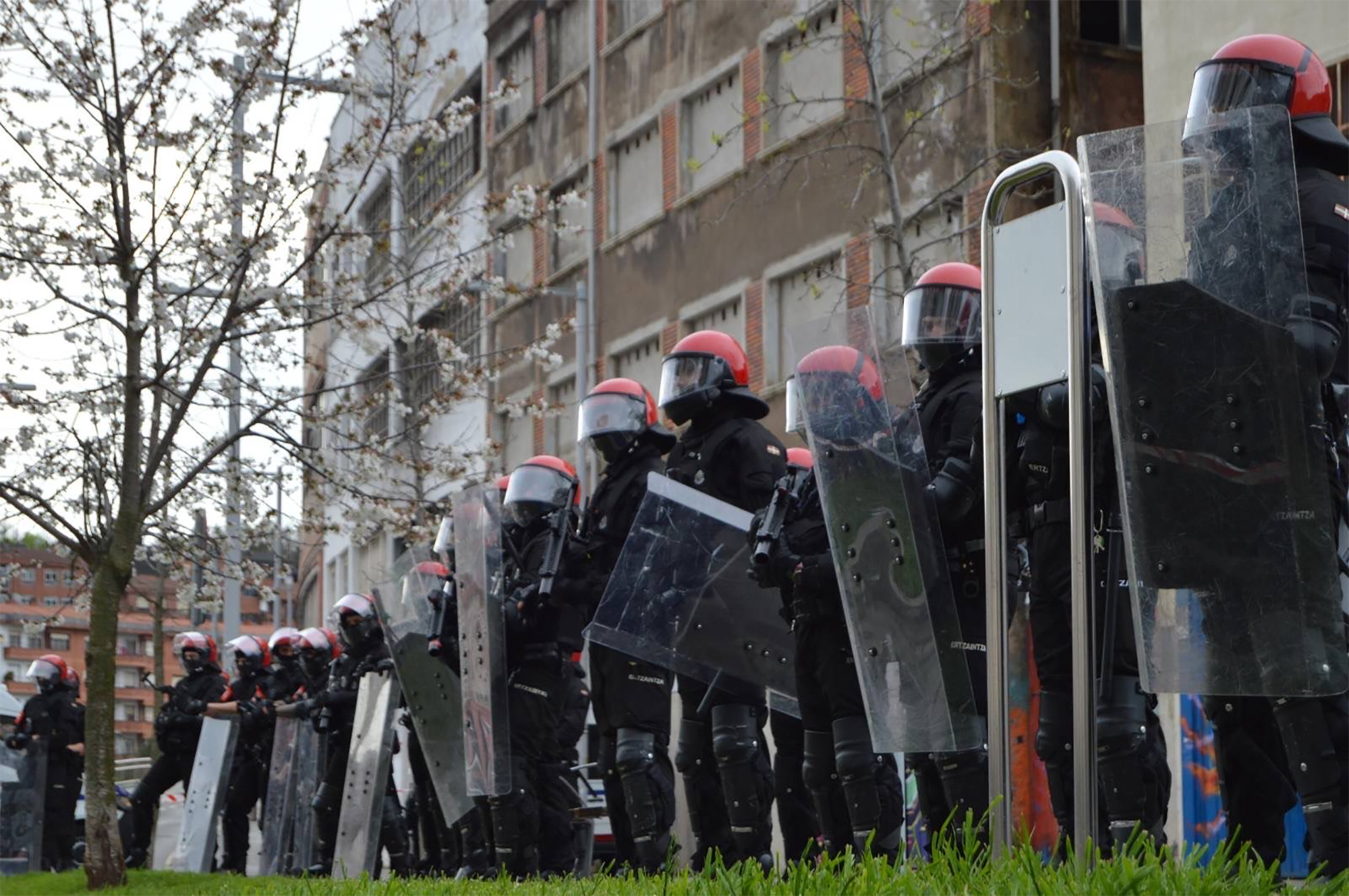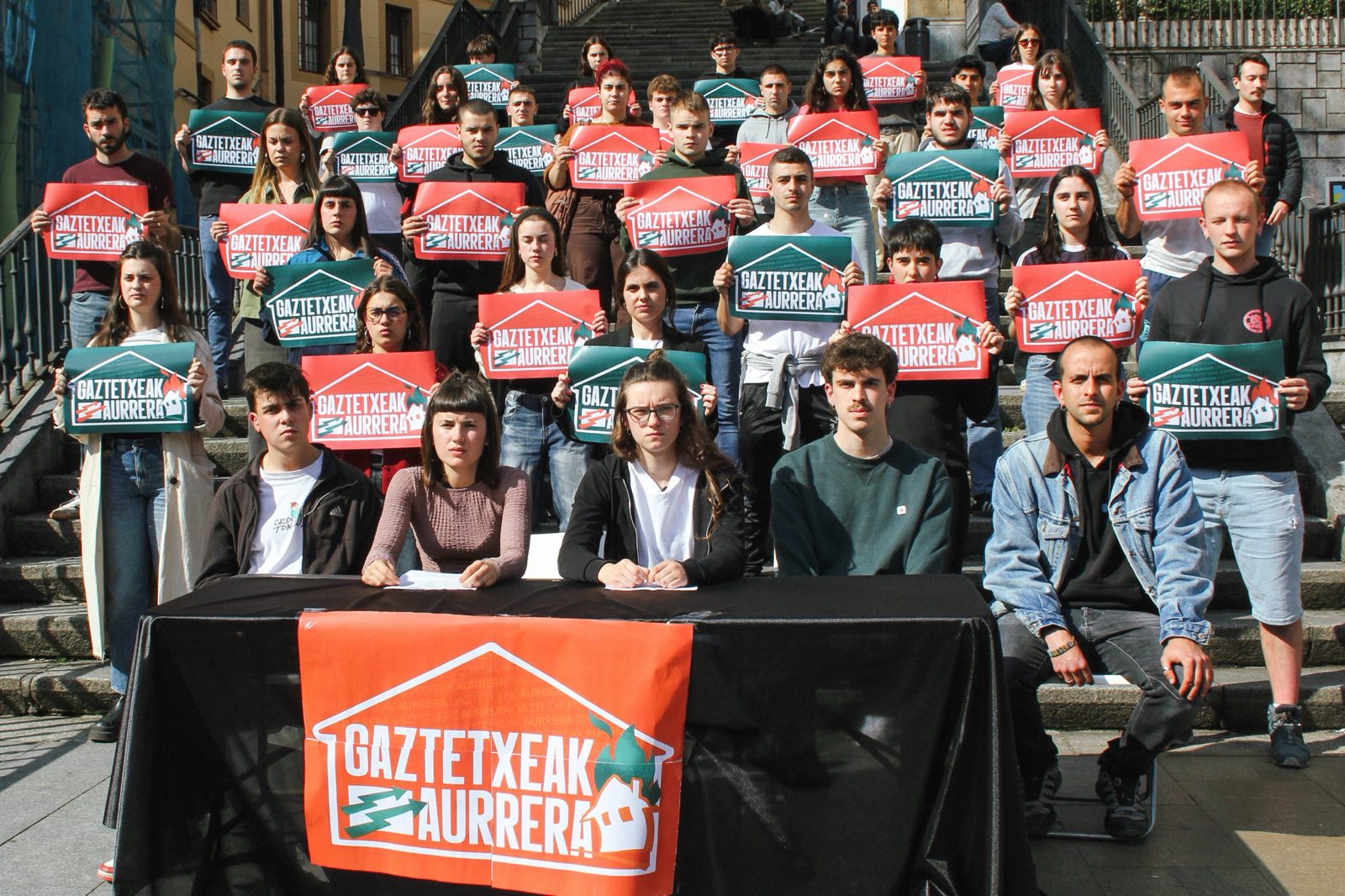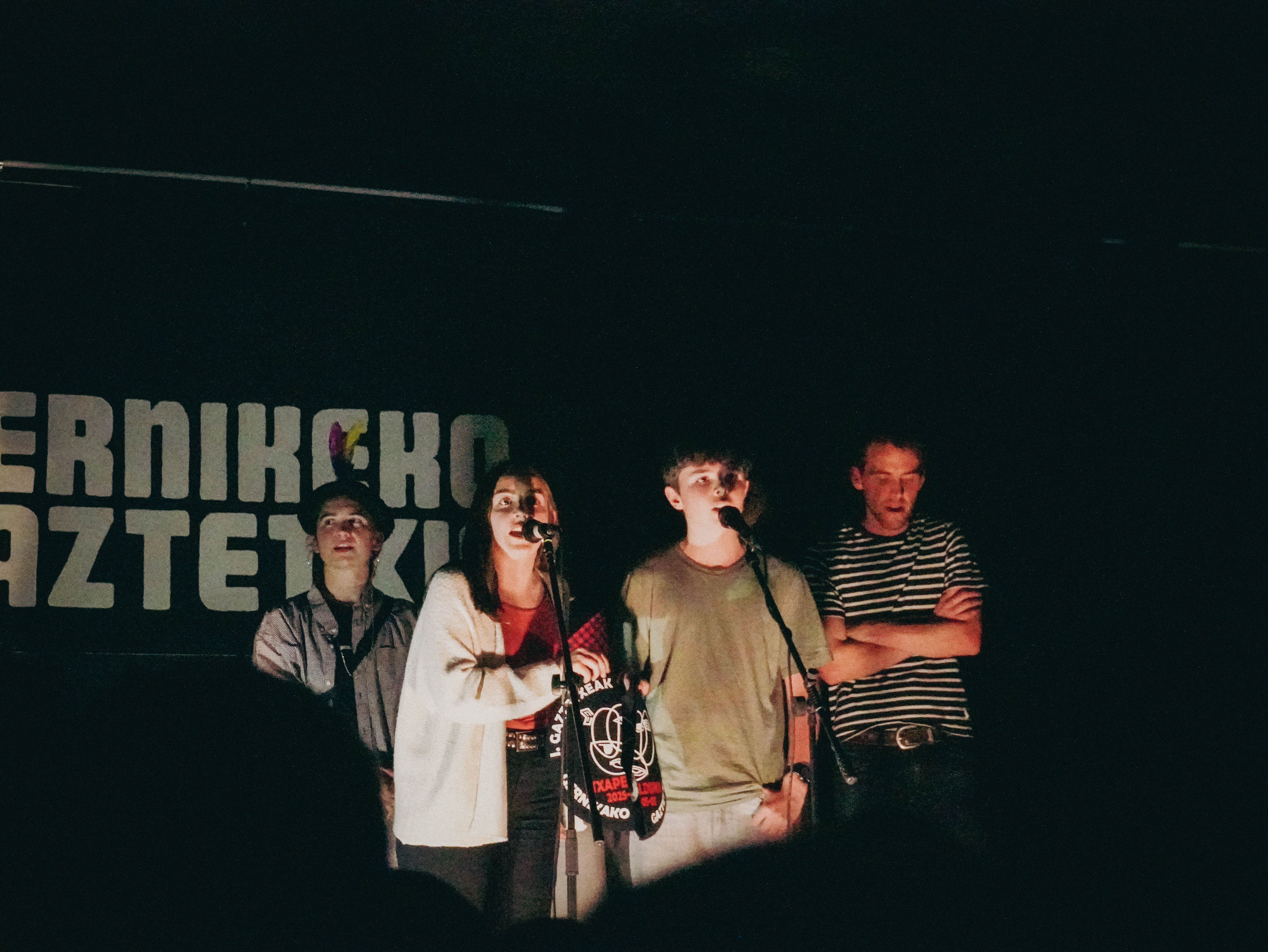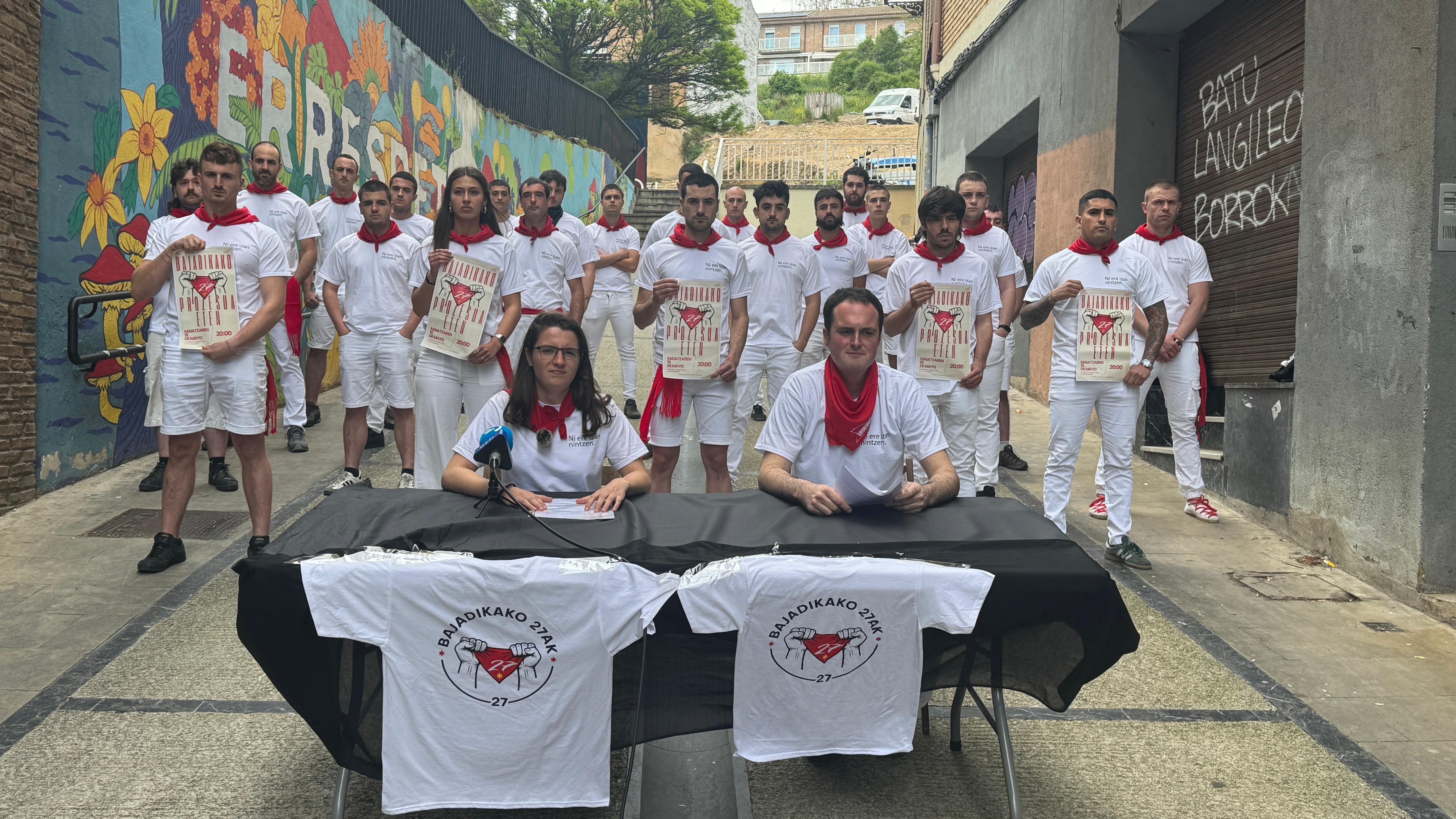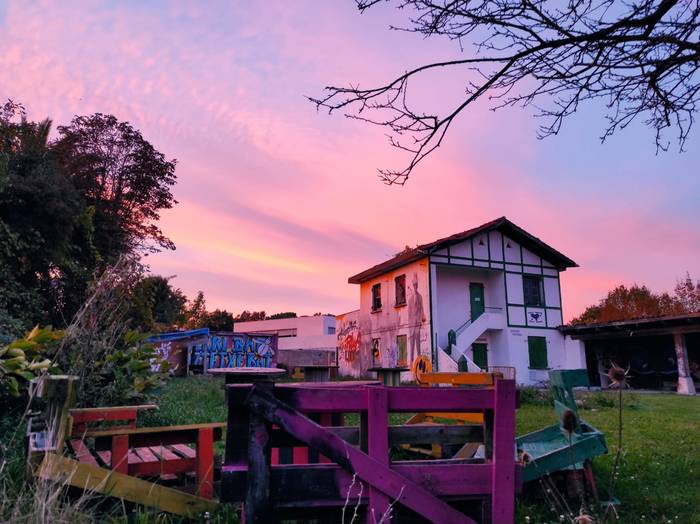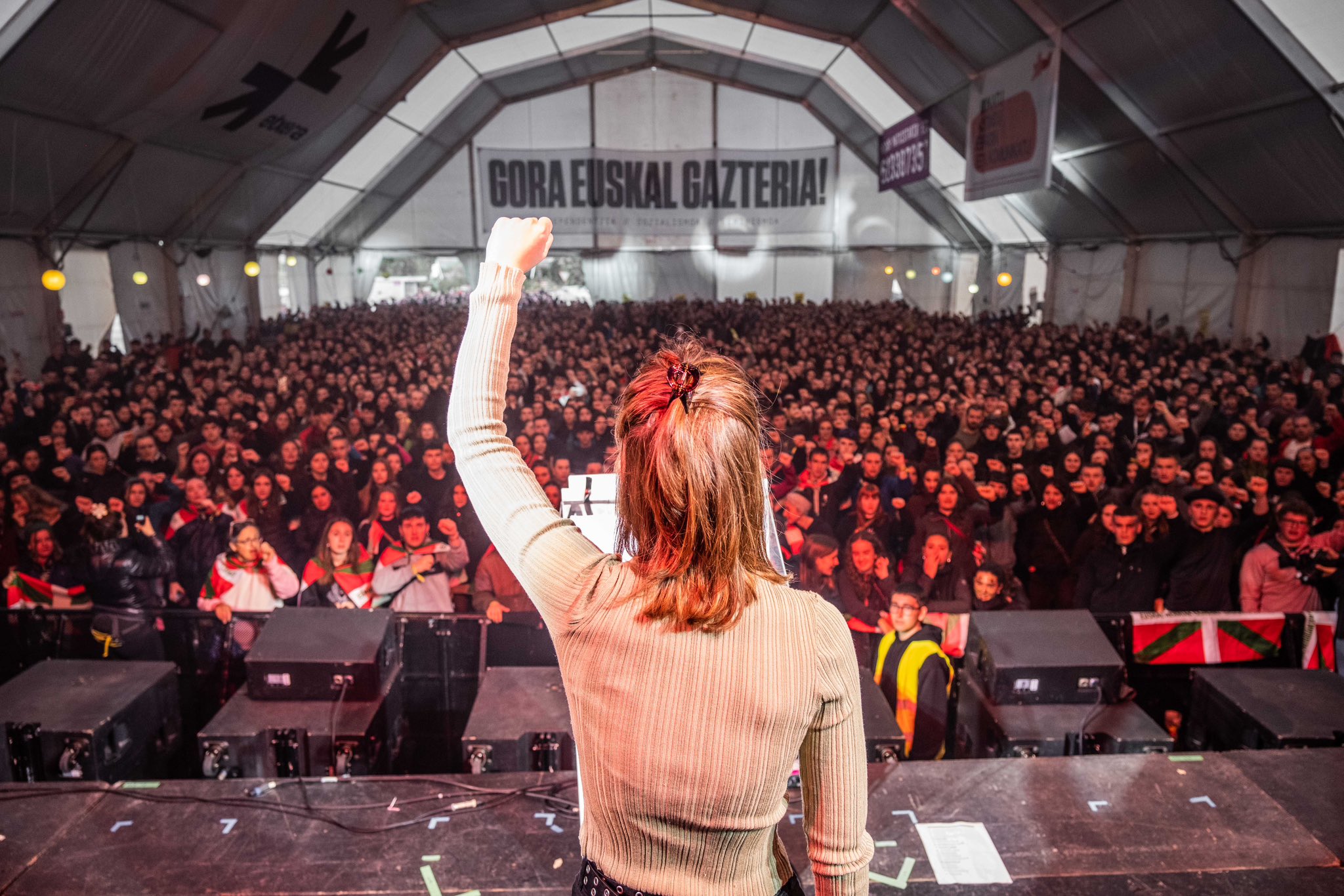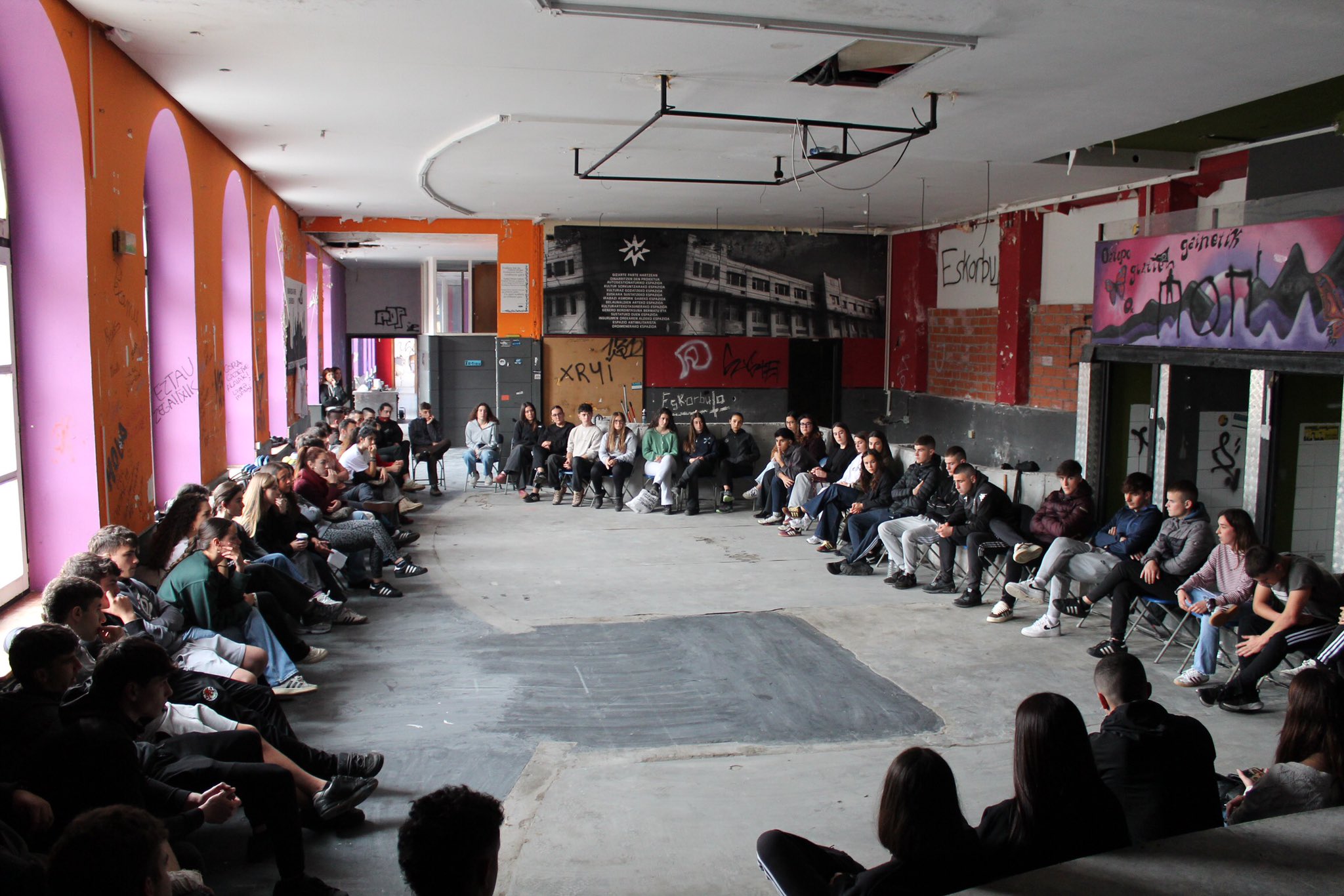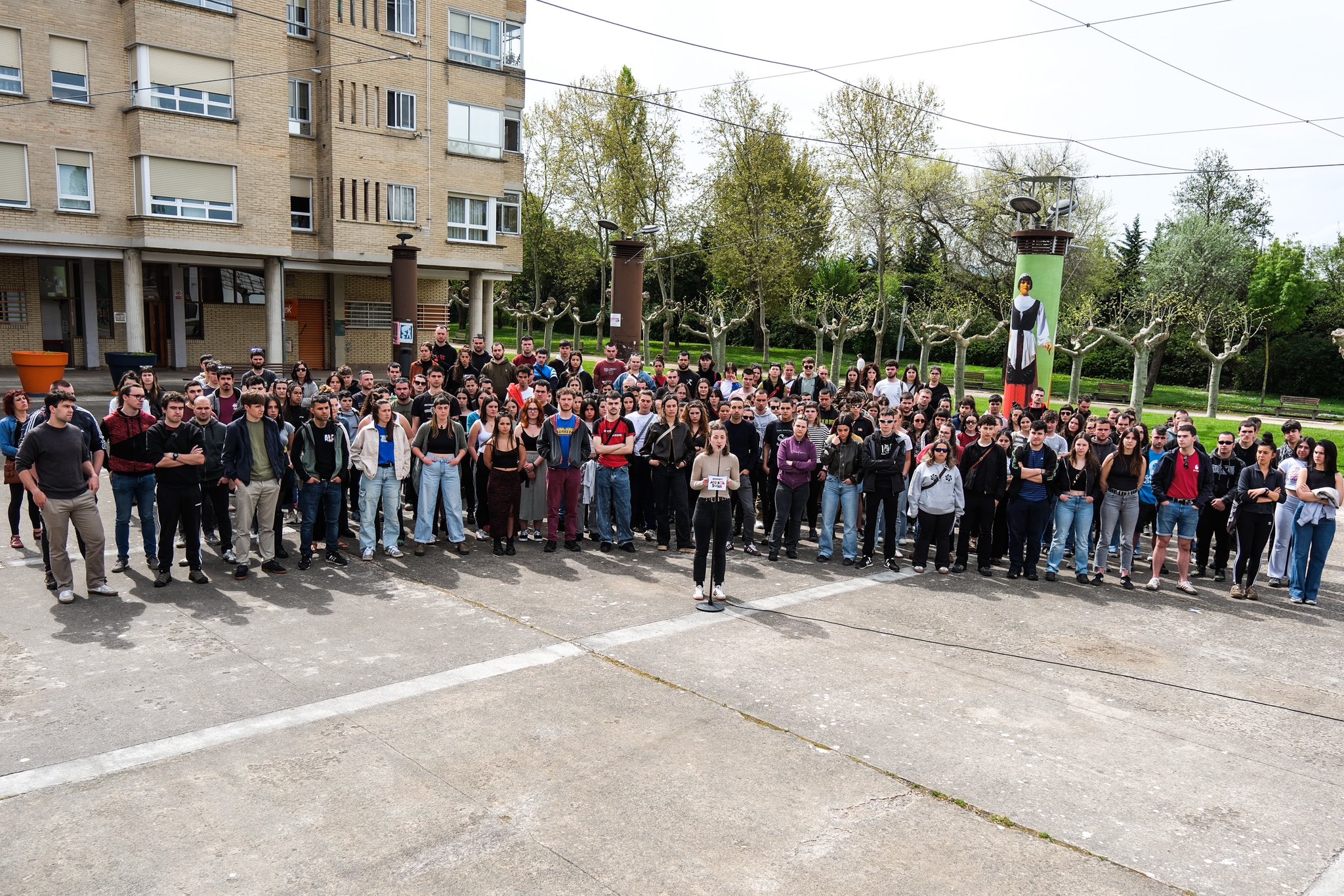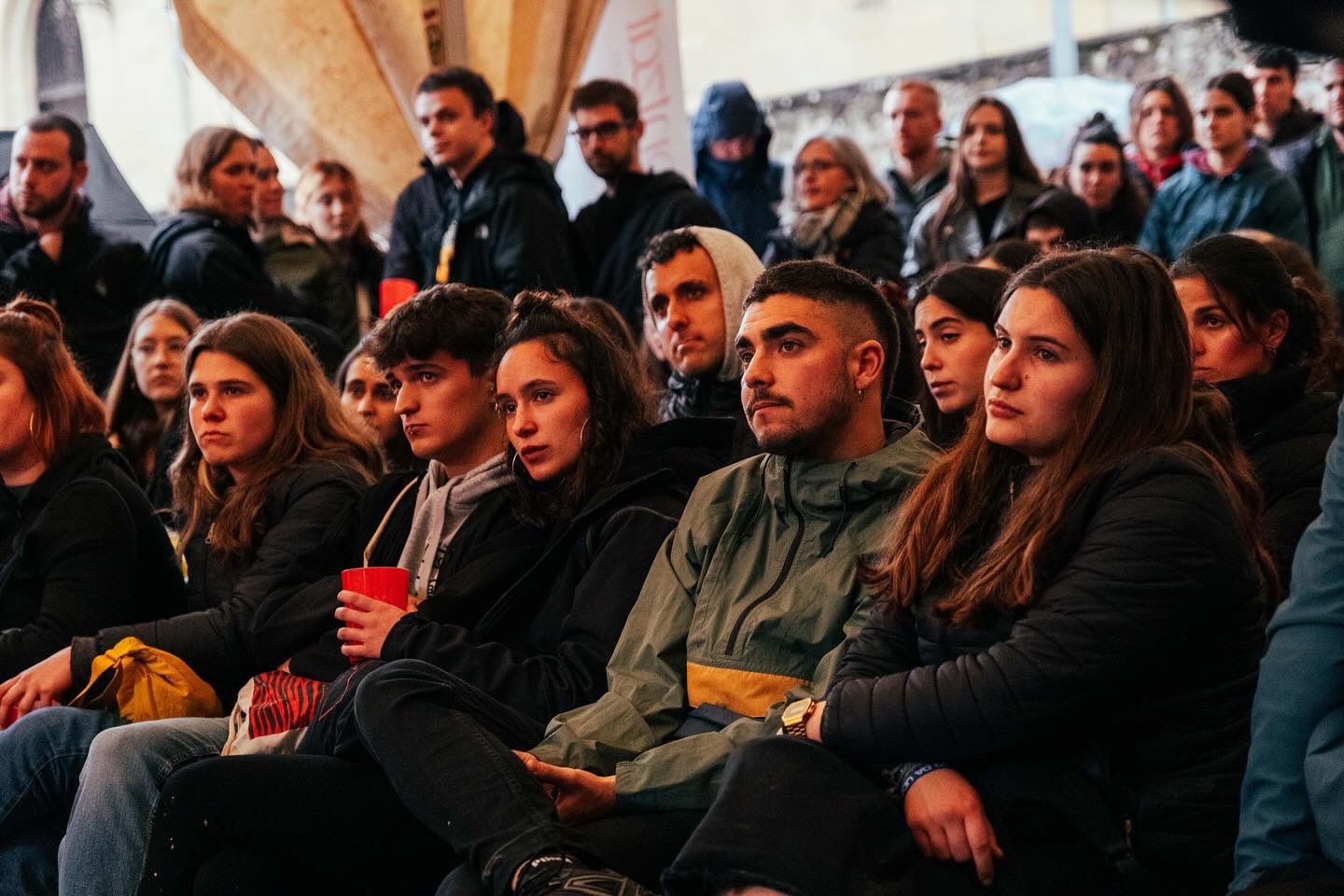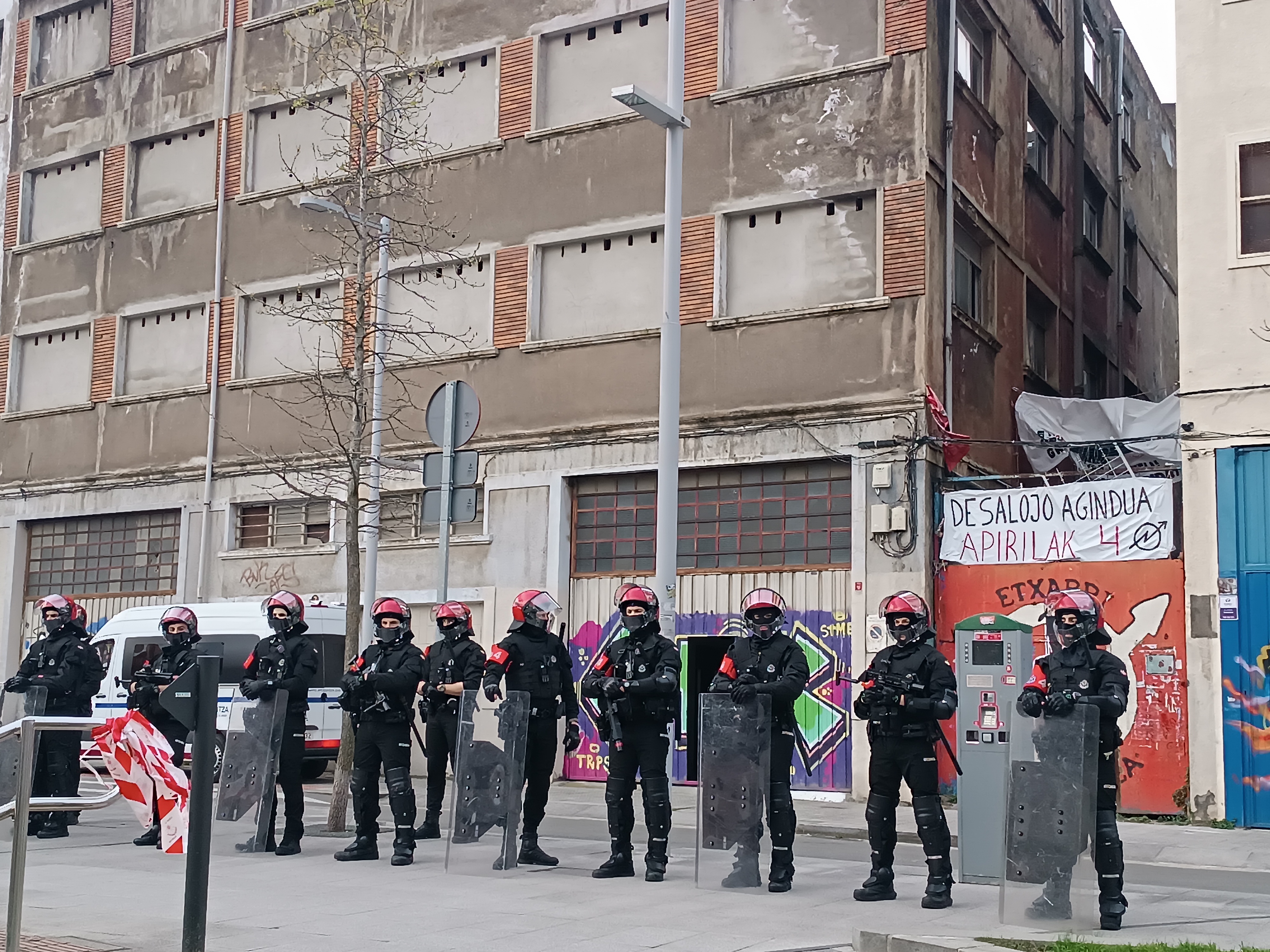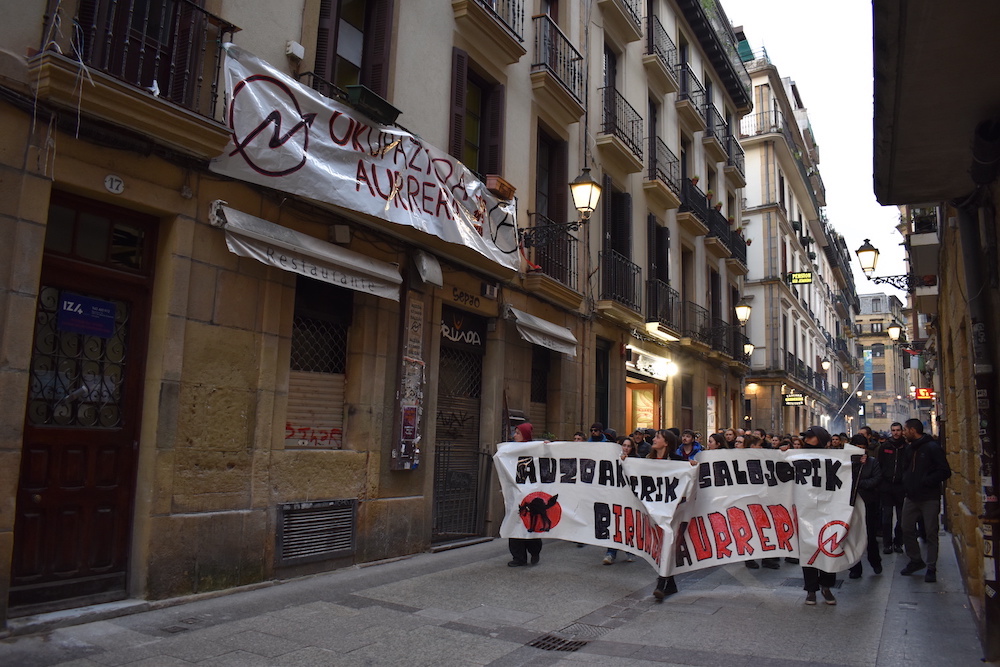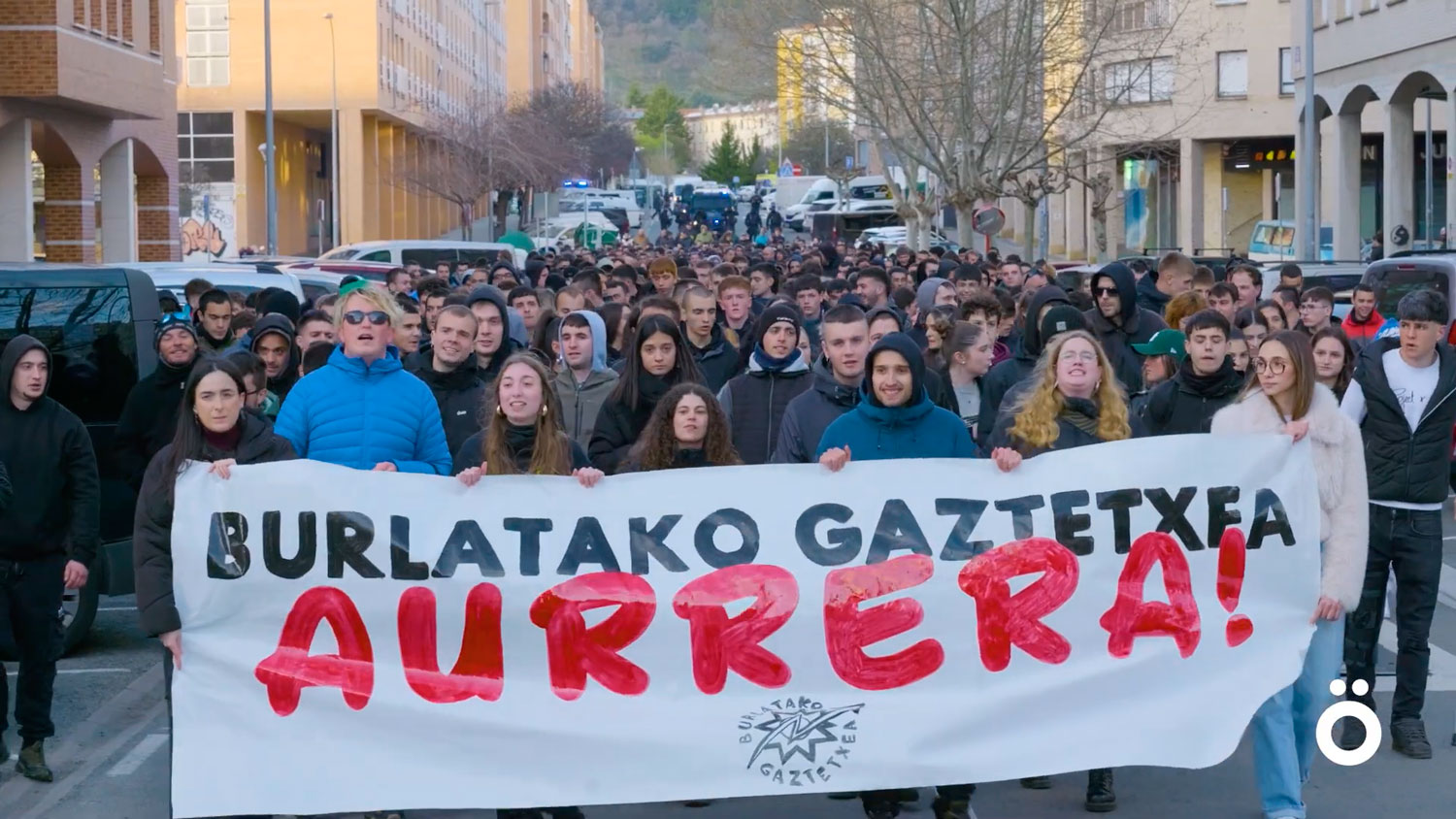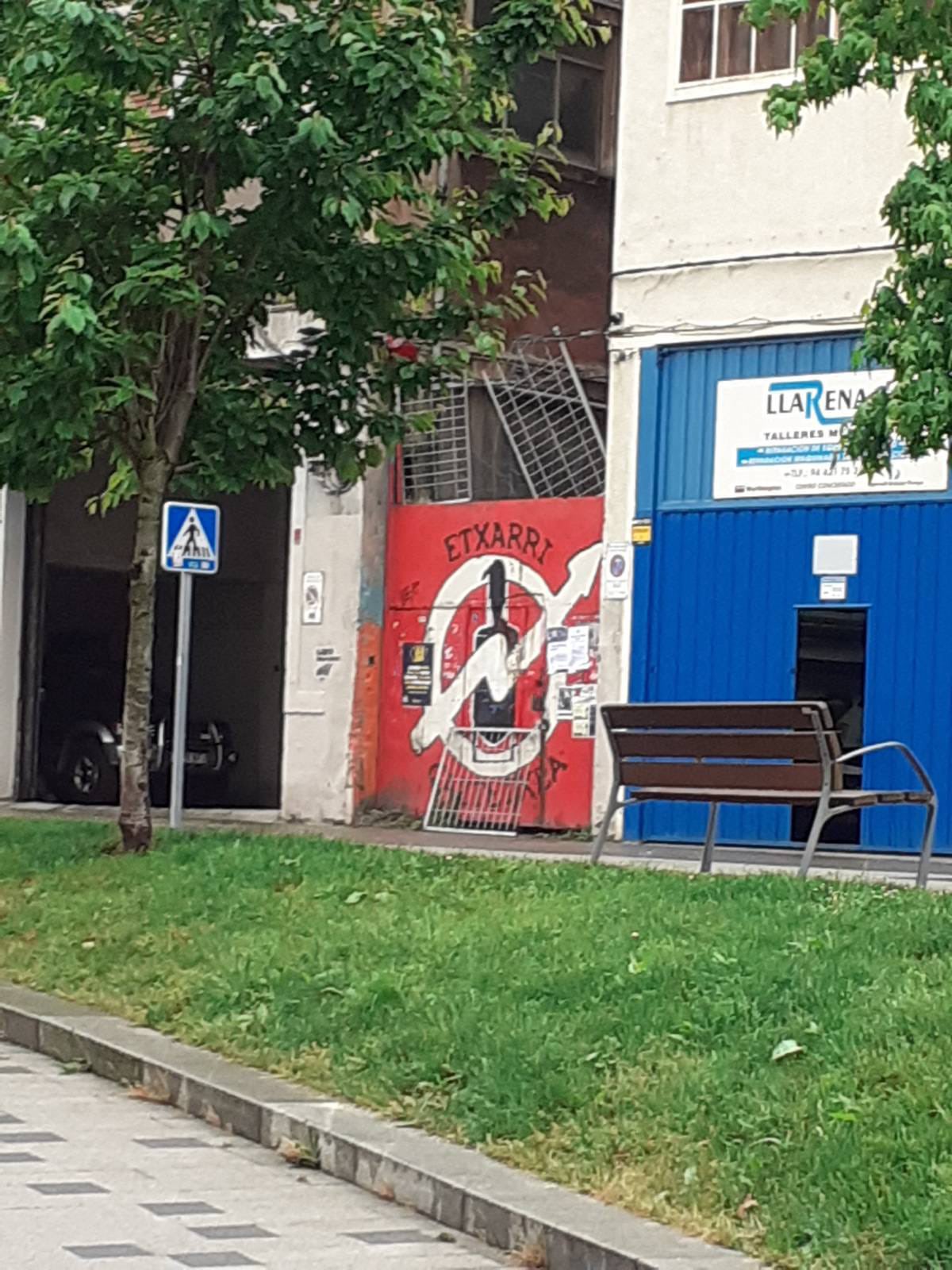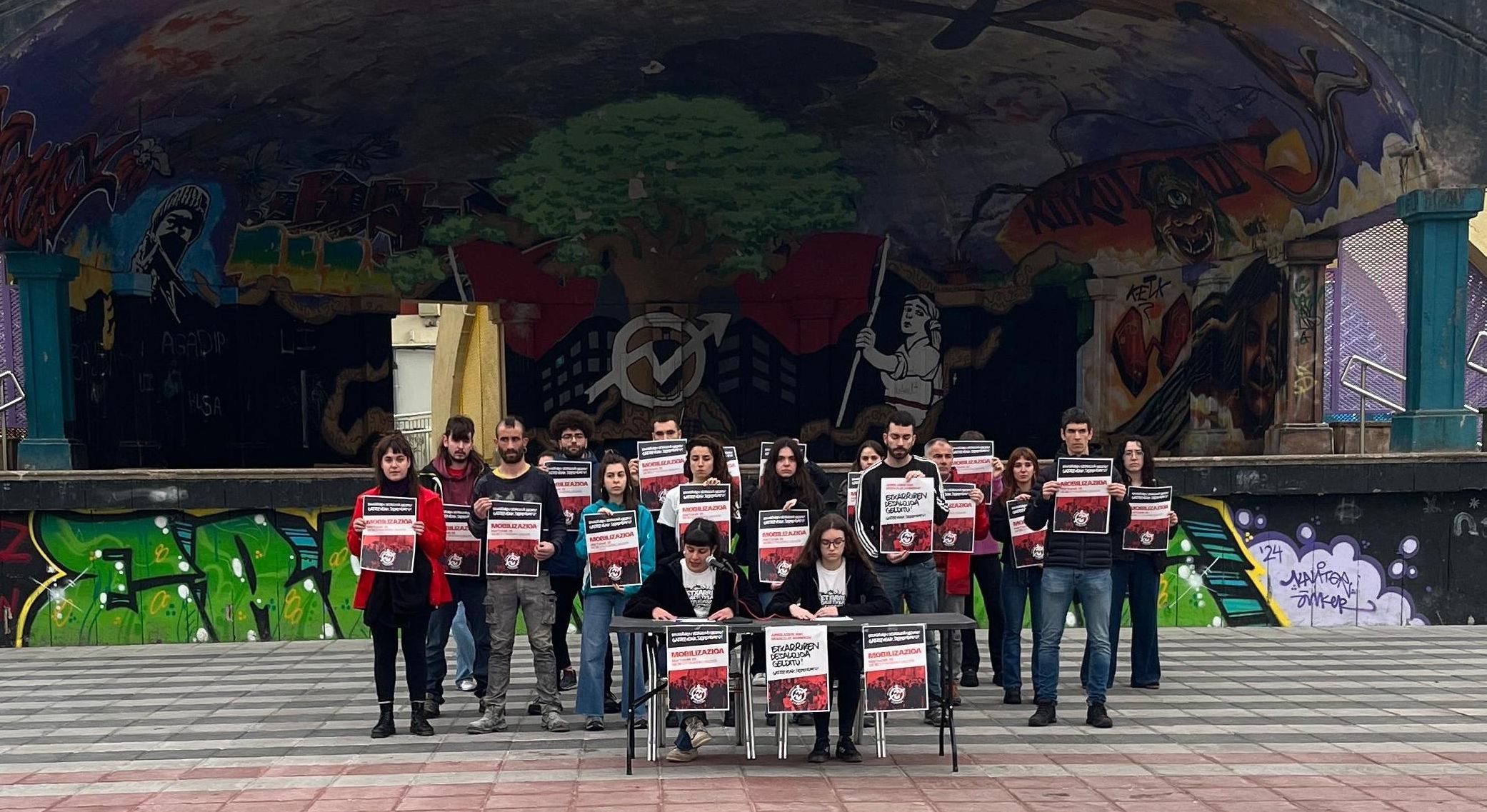25 years caring for the hill
- That 1988 delivery offered Vitoria a space that would give much to talk about. The young people have managed to carry out a project based on self-management and assembly, overcoming the attempts to separate the couple. This year, the Gaztetxe of Vitoria-Gasteiz will celebrate its fourth century in the best season conditions.
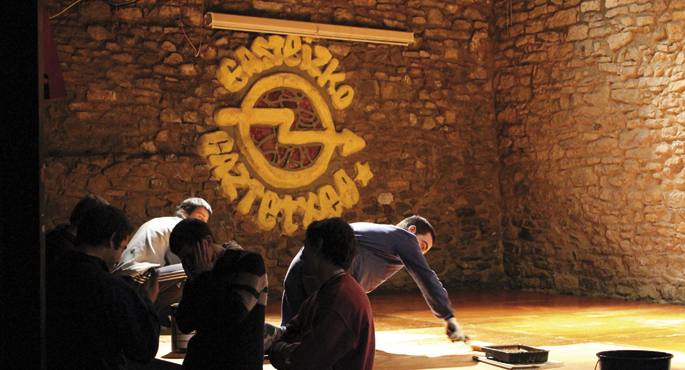
Gaztetxe's parents met in 1986. The police and drugs were the main actors on the hard scene of this decade, and a group of young people in the city created the Zapa cultural association to change the script. As they organized cultural activities, they focused on the problems of the time. The result of this reflection work was that they needed their own space. On April 28, 1988, St. Prudencio Day, the Alavese patron, some 300 young people gathered in front of the Farolón, located at the top of the Cuesta de San Francisco, to march towards the bishop's gardener's house. The door of the inn was opened forever in the city.
Before the crisis, party
It's been 25 years since then, years of great fluctuation. Ten of them have been offered by Iñaki Goñi at the youth assembly that handles the operation of the gaztetxe. It has used as an excuse the anniversary of the house to give way to the new generations of amateurs. Fortunately, there is no substitute.
The youth assembly meets every Monday and all decisions are taken in that model. It is organized into several working groups to bring the material abroad and bring it out, propaganda, ordering the bar or managing the economy. The cultural group, which is responsible for bringing the agenda together, is satisfied. The Gaztetxe offers the collectives the possibility of organizing parties to get money for their projects. In these times of cutbacks that are being noticed in all budgets, this is a good solution, and last year, for example, more than 50 parties were held.
According to Iñaki Goñi, “most people connect gaztetxe with weekend entertainment.” That’s why the best known activity is concerts, but gaztetxe opens every day and throughout the week there are talks and workshops. All the workshops are free of charge and some of them have emerged from the assembly, such as the Basque workshops, mainly aimed at foreign university students. Anyone who wants to set up a workshop has the doors open. Self-defense classes are taught, for example, by an Australian who one day knocked on the gaztetxe door. And the craft workshop started spontaneously: a group started to come together that wanted to learn about this field, and more and more people have come together.
One of the most interesting initiatives of the hill house is Tutti Free. There meet the objects that people have taken (especially clothes) waiting for a new owner. It's not an exchange in itself. Anyone can take or leave whatever they want. This service is open on Thursday, Friday and Saturday afternoon.
Difficult start
Getting this that now works naturally wasn't easy. In the 1980s, the occupation movement was highly developed in Europe, but not so much in the Spanish State, which had just awakened from the repressive environment of Franco. In addition, the model that came from Europe was home-oriented occupation.
The Gaztetxe assembly has also experienced internal problems. “When you organize such an open movement, you know what you are not going to find,” Goñi explains, “but there are nevertheless very different views.” This diversity caused tensions when it came to defining the project of the house: the practitioners chose to opt for intellectual work, while the theorists preferred to boost the workforce. In the end, debate and dialogue have been the key to reaching agreement on the opinions found on specific issues.
A project rooted in the city
The City Hall of Vitoria-Gasteiz has one of the best offers in the socio-cultural area, through the Civic Centers. This network of centers that group sports, culture, leisure and citizen care services began to develop in the time of the mayor, José Ángel Cadena. The first Civic Center opened in 1985, three years before the occupation of gaztetxe. At present, there are twelve such centres in the Alavesa capital and two others are in operation. However, in gaztetxe they see no reason to talk about competition, as the approaches of both are totally different: “The Civic Centers are highly institutionalized, they are more formal. In gaztetxe there is a calmer atmosphere and philosophy is more participative.”
The complementarity of both projects is reflected in the constant increase in the use of both projects. Moreover, Goñi uses the comparison between the two to describe the development of gaztetxe: “Before, fewer people approached, because it was more unknown. Now, removing gaztetxe would be like removing the Iparralde Civic Center.” The image of gaztetxe is deeply rooted in the city, both as a project and as a symbol. And it seems that the trend is to reinforce projects that are outside the official sphere: “In recent years we have seen a great boom. It may be a crisis or it may be that people are fed up with the situation and have started looking for alternatives.”
Overcoming barriers
The ghost of the Gaztetxe derribe has been surrounded by the whole building from the very beginning. Maria Jesús Aguirre, Deputy Mayor of Vitoria at the time of the occupation, is given the following sentence: “Excavators must leave upon arrival.” Although the threat of demolishing gaztetxe has been from the very beginning, and although several ideas have been proposed, a clear project has never been defined. Alfonso Alonso was the one who showed the most against the building. Currently spokesperson for pp in Congress, he was mayor of Vitoria-Gasteiz between 1999 and 2007. It was a gift for the youth movement because “I don’t like” what I said about the kid.
Alonso's most notorious idea was to build the fifth tower. The Skyline line of Vitoria-Gasteiz is known for its four towers: Cathedral of Santa Maria and Churches of San Miguel, San Pedro and San Vicente. The mayor of the PP wanted to draw another one in the place where the bishop's gardener's house had been. “Alonso’s was the worst time,” says Goñi, but also that of more work, especially that of socialization.” In the face of these attacks, the forest goblins descended to defend Gaztetxe. More than 80 groups supported this campaign and the demonstration organized around it.
The free radio Hala Bedi has developed her career with the young woman. These two neighbours of the old town of Vitoria-Gasteiz together celebrated their anniversaries (radio 25 years, gaztetxe 20) in October 2008 under the slogan “Piztu Gasteiz!”. Three years earlier, the Gazte Eguna was celebrated, in which thousands of people participated, showing that the walls of gaztetxe rely on strong columns. As Goñi has pointed out, “if the building is demolished, all this will turn against them.” However, this is unlikely to occur in the near future: “We have no relationship with the City Hall, and that’s good.” After the launch of the Kukutza in 2011, the mayor of Vitoria-Gasteiz, Javier Maroto, made it clear that his municipal group does not want to have any problems with the young woman. “Everything will stay as it is,” he said.
For the moment, therefore, it will remain in its privileged location, in the city centre. It does not have housing in the surroundings and the schedules related to the noises (especially concerts) are agreed with the neighbors; the coexistence has always been good. The Gaztetxe of Vitoria-Gasteiz has the doors open to build the future and the keys of the building, besides being young people, are them.
25. urteurrena ospatzeko, Gasteizko gaztetxeak aurpegia garbitu du. Tabernako zoruari baldosak jarri dizkiote eta eszenatokia berritu dute. 1988ko apirilaren 28an apezpikuaren lorezainaren etxeraino egin zen manifestaldia omentzea aukeratu zuen gazte asanbladak ekintzez josi duten hilabete honi hasiera emateko. 6an Faroloiaren aurrean elkartu eta Aiztogile kalean zehar ibili zen kalejira. Hilaren 27ra arte, ekintzak daude programatuta ia egunero. Kontzertuak, mahai-inguruak, hitzaldiak, bertso saioak eta barreterapiaren gisako tailerrak, besteak beste. Burokrazia dela-eta, kalean ekitaldiak antolatzea zaila bazaie ere, bi ekintza antolatu dira gaztetxearen alboan dagoen Etxauri plazan: afrikar tailerrekin girotuko den haurren eguna eta bazkari herrikoia.
Aste Santuan Berriozarren egindako topaketetatik egun gutxira bildu gara Gasteizko Sorturen bulegoan. Hango kontuez jardun dugu apur bat, baina batez ere gaur egun euskal gizartean dantzan diren gaiez aritu gara, Ernaik horien gainean duen iritzian sakontzeko asmotan. Amaiur... [+]
Pasa den asteko "kaleratze ilegala" salatu dute hainbat herritarrek, ostiral arratsaldean.
Manifestazio jendetsu batek herriko kaleak zeharkatu ditu, Poliziaren gehiegizko dispositibo batek zainduta, gazteek kudeatutako guneen defentsan eta Gaztetxeak erasoen aurrean defendatzeko. Manifestazioaren amaieran, publiko egin dute iragarpena.
Amenabar enpresak Bilboko Udalaren eskutik apirilaren 4rako agindu duten desalojoaren kontra azaldu dira bilkuran. Poliziak indarrez kanporatu ditu. Ostiral honetan18.30ean, Errekaldeko Plazatik hasiko den manifestaziora batzeko deia luzatu dute gazteek, baita desalojoaren... [+]
Bilboko Udalak eta Amenabar enpresak proiektu urbanistiko baten pean itxi nahi dute 10 urtez auzoko bizitza sozialaren erdigunea izan den topalekua. Horren aurrean, hiriko 55 kolektibok baino gehiagok manifestu bat sinatu dute prozesua gelditzeko exijitzeko.










